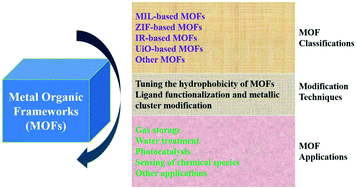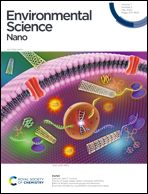Critical role of water stability in metal–organic frameworks and advanced modification strategies for the extension of their applicability
Abstract
Metal–organic frameworks (MOFs) are well known for their versatile applications in diverse fields (e.g., gas adsorption, water purification, sensing, drug delivery, and catalysis). The basic properties of most MOFs (e.g., morphology and structure) are, however, known to be affected sensitively if exposed to moisture/water. Consequently, it is necessary to conduct a comprehensive assessment on the stability of MOFs in relation to variables associated with such property changes (e.g., reduction in the surface area and structural collapse). In this article, factors and processes affecting the aqueous stability of diverse MOFs (e.g., imidazolate and carboxylate frameworks) are discussed. This article will thus help researchers properly assess the influence of water on the stability of MOFs so that suitable strategies can be established for the development of water-stable MOFs and for their efficient applications toward diverse fields (e.g., separation/storage of gases and adsorption/photocatalysis/sensing of pollutants in aqueous systems).

- This article is part of the themed collection: Nanomaterials in air


 Please wait while we load your content...
Please wait while we load your content...